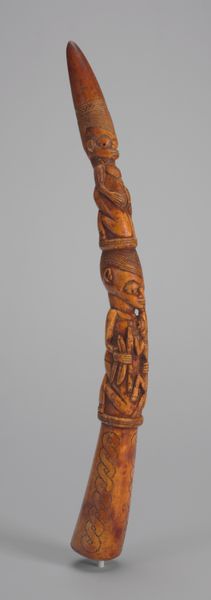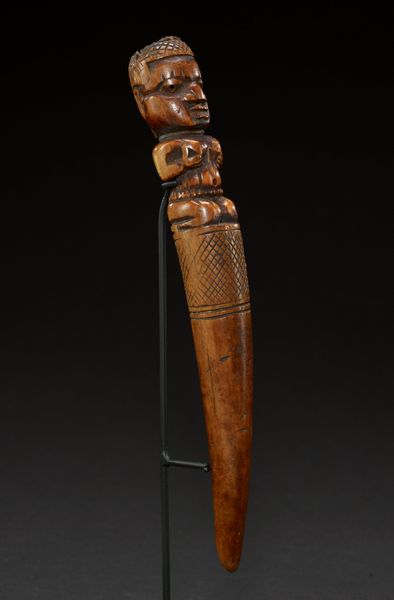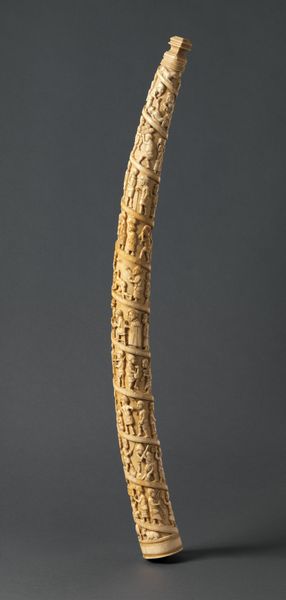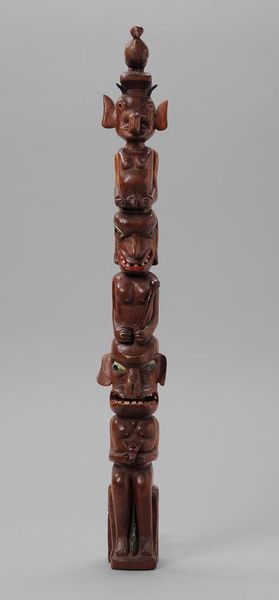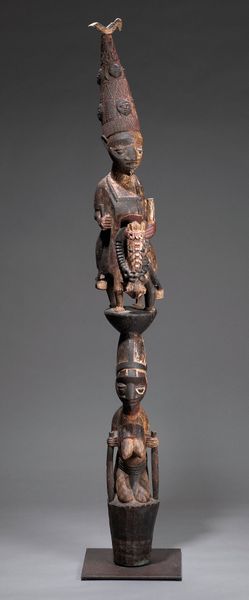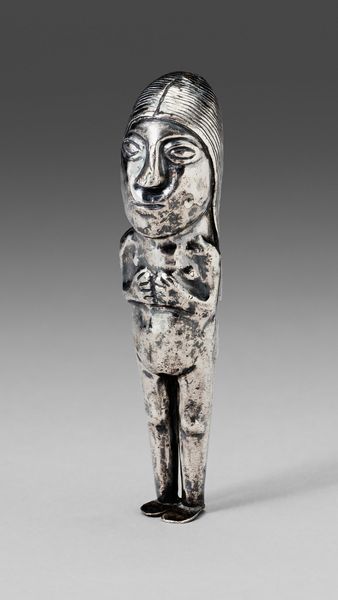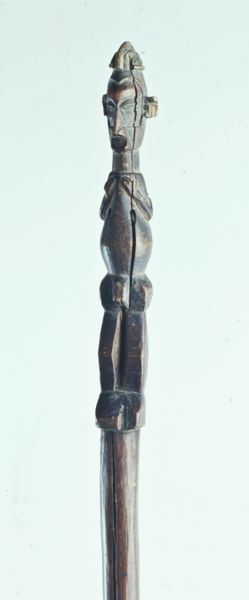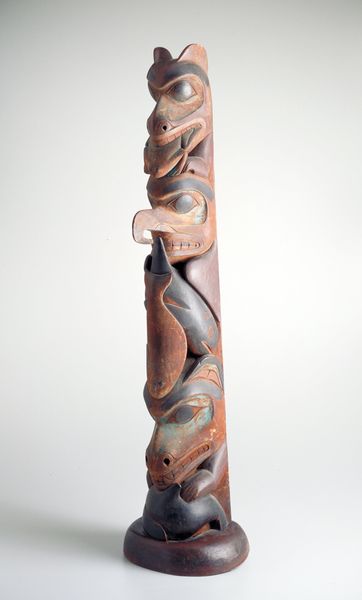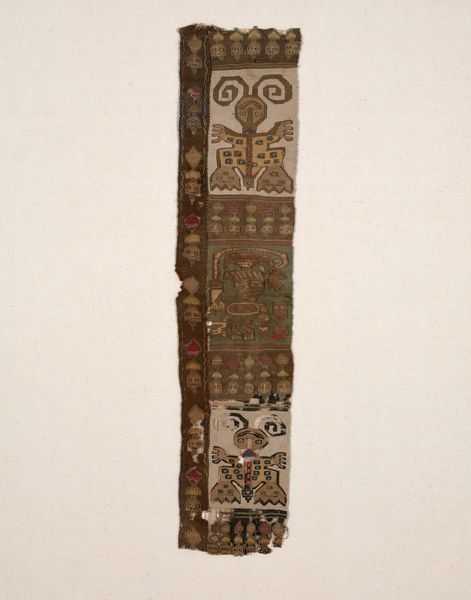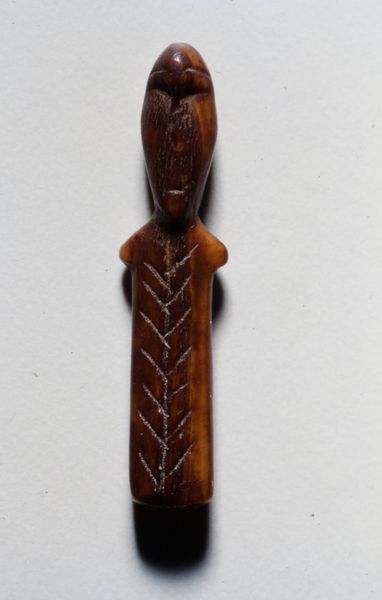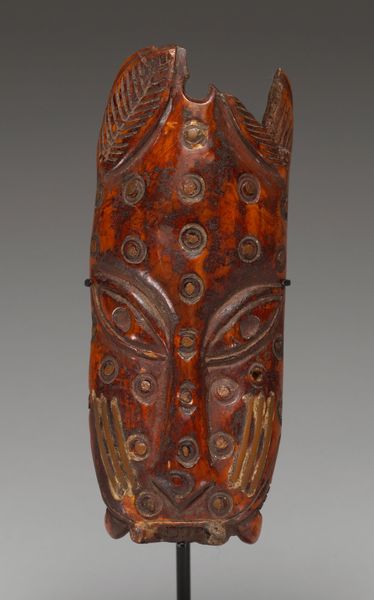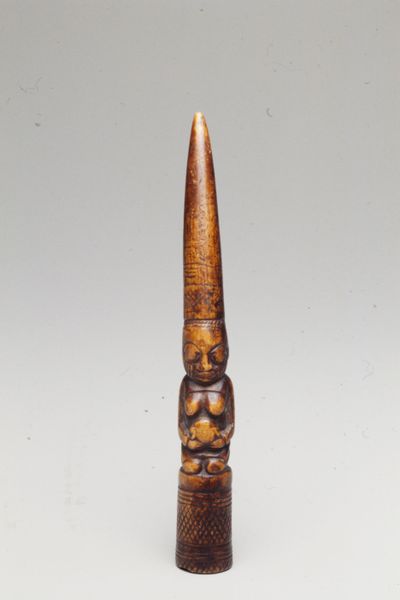
sculpture, wood
#
sculpture
#
figuration
#
form
#
sculpture
#
wood
Dimensions: 12 1/2 x 1 13/16 x 1 3/4 in. (31.75 x 4.6 x 4.45 cm) (including attached mount)
Copyright: Public Domain
Editor: Here we have the "Godstick (tiki wananga)", a Maori sculpture carved from wood around the early 19th century. It's quite striking—the face at the top with inlaid eyes, the detailed carvings... I’m curious, what deeper stories do you see within this object? Curator: Well, immediately, it's impossible to ignore the complex relationship between indigenous artistic expression and the colonial gaze that often surrounds its interpretation. This "godstick" wasn’t just art; it was an integral part of a living belief system, a wananga – a school of learning. The term “godstick” itself hints at a Western imposition of meaning. What does the term “god” signify outside a European understanding? Editor: That's a really interesting point. I hadn't thought about how our language shapes our understanding. So, instead of 'godstick', how would we look at it? Curator: I think it’s more fruitful to think about it within its cultural context, as a conduit to ancestral knowledge and power, carefully constructed and used within a specific social and spiritual framework. The carved figures aren’t just decoration. What figures do you see represented here, and what do you think the repetition might signify? Editor: I see figures layered on top of each other with surface patterns around them, the large head at the top is quite prominent, which I assume has some significance to who they represent. But if they're linked to learning, are they meant to convey a type of hierarchy, knowledge or guidance? Curator: Precisely. Think about the role of ancestors, of whakapapa – genealogy – in Maori culture. The layering could represent generations of knowledge passed down, embodied in the object itself. We must move away from simply appreciating it aesthetically and instead, recognize it as a powerful form of cultural preservation and resistance. Editor: So, understanding its function challenges the idea of it simply being a passive object on display? Curator: Exactly! It prompts us to ask whose perspectives are prioritized when we talk about art, and whose are silenced. It encourages us to actively decolonize the museum space itself. Editor: That gives me so much to think about. Thank you for widening my perspective, and for considering what we take for granted as 'neutral' descriptions.
Comments
No comments
Be the first to comment and join the conversation on the ultimate creative platform.
